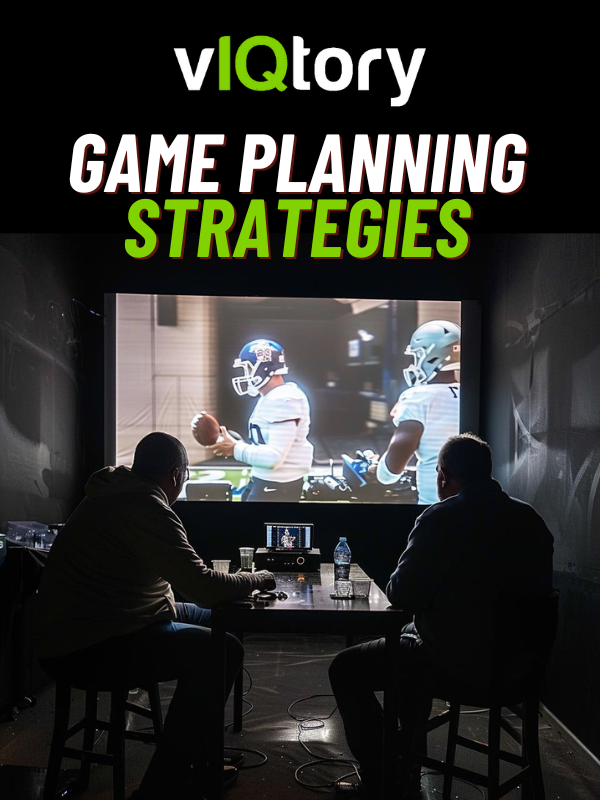Offensive play calling can be as simple as you want to make it or as complex. Regardless if you run a system with a lot of verbiages, or have fast one-word calls, an organized call sheet is a must.
In order to make an effective call sheet, you need to organize the right pieces of information so they are easily accessible.
Remember, there are less than 30 seconds that you have in between plays to make a call. Eliminate all the game day stress by properly organizing your call sheet.
Creating An Offensive Call Sheet
There is no perfect way to create an offensive call sheet. Every offense is different and every coach is different in the way they attack the opposing defense.
The items we list below are simply guidelines for how you should structure your call sheet, so you can be the most efficient, given the situation.
Down & Distance Calls
We primarily create our call sheet based on the down and distance. This means 1st and 10, 2nd and 8, and so on.
The reason we want to structure our call sheet based on the down and distance is that certain plays are meant to run on certain downs.
For instance, you wouldn’t run a quarterback sneak on 4th and 10 or throw a deep pass on 4th and 1.
We recommend having multiple sections for the down and distances. As you can see in our call sheet below, we have slots available for all down and distances.
If you’re someone who doesn’t have a ton of plays, this type of format is great because all you will need to do is check the down and distance and trust your play sheet.
This works well if you’re a youth coach and see the same type of defense every play.
Situational Calls
Situational calls are another way to structure plays. If you want to be more complex, you can structure your call sheet with distance calls, as well as situational calls.
A situational call is a call that is made based on the situation in the game regarding personnel, situation type, or play type.
For example, if you just intercepted the ball on defense, the first play after the turnover is typically a “shot play”. This means the offense is going to try to take a shot to the endzone. Every coach should have a shot play in their bag ready for these situations.
Another example would be if you script the first 10 plays. Offensive coordinators who watch film will typically know what defense they will face to start the game. They will script 10 plays they want to run to start the game, that they think will work best against the looks they’re going to get.
Trick plays, screen passes, and any other different types of plays should have their own section on your play sheet as well. Remember, the key is to make sure you know exactly where everything is, so you can access it as quickly as possible.
Learn How To Watch Film Properly…
Uncover your opponent’s offensive and defensive tendencies so you can easily build a game plan.
Inside You’ll Find:
- Strategies to pick apart defenses
- How to identify player weaknesses
- How to save time in your weekly breakdowns
Game Management
If you’re an offensive coordinator, it’s important you have on your call sheet game management sections as well. This includes keeping track of timeouts, 2-minute offense calls, and knowing when to take a knee to end the game.
If you’re in a 2-minute situation, you need to accelerate your play calling. Do you have hand signals? Does your QB need to run to the sideline? Do you have one-word calls?
What is your play call in situations where you need to get it out quickly? This is something that should be on your sheet so you can just yell it to the quarterback or signal it in at a rapid pace.
Another game management situation is keeping track of how many timeouts you have. Mismanaging timeouts is a common theme among offensive coaches.
Remember, you can’t carry over timeouts before the half, so use them to your advantage. Similarly, you don’t want to use timeouts too often in the second half, because you may need them in the 4th quarter.
Use the chart below to keep track of your timeouts as well as the opponent’s timeouts.
Get Your Call Sheet
Below we have a call sheet that you can completely customize to your liking. We do realize we added way too many columns, so feel free to take out what you don’t want and add things you think you’ll need. Each coach has different styles but we wanted to make sure you had everything you needed to feel equipped.
Download Your Free Call Sheet Here
If you have any questions regarding the call sheet, be sure to reach out to us via email at [email protected] and we’re happy to help.





